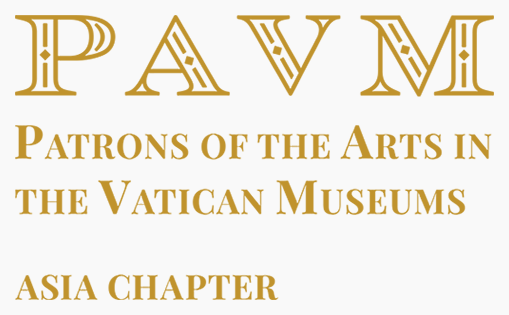Florence: Medici Bankers to Medici Popes by Elaine Ruffolo
APAVM SG • 344 views
At its height, Renaissance Florence was a center of enormous wealth, power and influence. A republican city-state funded by trade and banking, its often bloody political scene was dominated by rich mercantile families, the most famous of which were the Medici. From relatively modest beginnings, the Medici became bankers to rich and powerful families in Europe and bankers to the Pope. But perhaps their most enduring legacy and for which the world owes the Medici a debt of gratitude is their patronage of the arts. Artists such as Brunelleschi, Donatello, Fra Angelico, Botticelli, and Michelangelo all thrived under Medici patronage. Join Renaissance art historian, Elaine Ruffolo as she charts the family's influence on the political, economic, and cultural history of Florence. Beginning in the early 1430s with the rise of the dynasty under the near-legendary Cosimo de Medici, to the golden era under Lorenzo il Magnifico, to the family's ultimate goal; a Papal tiara.
About
Elaine Ruffolo has been teaching Renaissance art history in Florence for over 30 years and is a popular instructor for students and adults. Elaine holds degrees from the University of Wisconsin and Syracuse University and first came to Italy as a Florence Fellow in 1989. Ruffolo has lectured for many American programs in Italy including Syracuse, Stanford, and Vanderbilt Universities, and currently develops academic travel programs for small groups such as the Smithsonian Associates, Yale Alumni, College of William and Mary, the Clark at Williams College, and the Patrons of the vatican. She is on the advisory board of the Friends of Florence and consults for CEO and YPO programs in Europe including Rome, Florence, Sicily, and Naples. Ruffolo recently began online art history presentations (Art History Encounters) as a way to bring the art and culture of Italy directly to people's homes.
Renaissance Siena: Art for a City by Fabrizio Nevola
APAVM SG • 177 views
Draped across three hills, Siena is perhaps the most beautiful city in Tuscany, a medieval ensemble of palaces and towers cast in the warm brown of burnt-Siena colored brick. Its soaring skyline is its pride, dominated by the blazing black and white banner of a cathedral and the taut needle of the Torre di Mangia. The Palazzo Pubblico, the very center of Siena is but four streets away from olive groves and orchards. The contrast is part of the city's charm: densely built-up brick urbanity, and round the corner a fine stretch of long Tuscan farmland. Here art went hand in hand with fierce civic pride to make Siena a world of its own. His talk reveals how Siena - a city familiar to many as the centre of the "gothic" - was also a major artistic centre during the Renaissance with close ties to Rome. Through the patronage of papal families such as the Piccolomini and wealthy bankers such as the Spannocchi and Chigi, the city was transformed over the course of a century, retaining a distinctive style that looked back to both the recent past and to alleged Roman origins. Local artists, such as Jacopo della Quercia and Francesco di Giorgio Martini, as well as famous "imports" like Donatello or Pinturicchio renewed the city and its major monuments.
About
Fabrizio Nevola is a Professor of Art History and Visual Culture at the University of Exeter. His first book, Siena: Constructing the Renaissance City (Yale University Press, 2007) was awarded the Royal Institute of British Architects, Sir Nikolaus Pevsner International Book Award for Architecture. His most recent monograph is Street Life in Renaissance Italy (Yale University Press, 2020), which was shortlisted for the Renaissance Studies Biennial book prize (2022). More recently, through grant funded research projects, including the 'Hidden Cities' apps and the Florence 4D website, he has developed digital art history approaches using geodata, 3D modelling and GPS technologies.
In Search of Redemption Caravaggio in Naples, Sicily and Malta by Dr Ross King
APAVM SG • 170 views
This lecture will provide a comprehensive understanding of Caravaggio's artistic journey through Naples, Sicily and Malta, highlighting the impact of his work in each location. We will look especially at his life and work in Naples, a vibrant city that was instrumental in shaping his artistic career and solidifying his reputation as a groundbreaking painter in masterpieces such as "The Flagellation of Christ," "The Seven Works of Mercy," and "Salome with the Head of St. John the Baptist." The lecture will examine the turbulent personal life whose circumstances brought him to Naples in the first place and then, inevitably, led to his subsequent flights and eventual death.
About
Dr Ross King is the award-winning author of numerous books on Italian art and history, including Brunelleschi's Dome, Michelangelo and the Pope's Ceiling, Leonardo and The Last Supper, and most recently The Bookseller of Florence. He is a fundraiser for the arts and a frequent lecturer in Europe and North America. He is a Smithsonian Expert, an accredited lecturer for the Arts Society, and has led study tours in cities such as Rome, Florence and Milan.
Address
1 Kallang Junction #05-01
Singapore Vanguard Campus 339263
PHONE
Cheng Lu Lu | Tel: +65 9733-3493 | lulucheng@apavm.com
Kew Siok Wee | Tel: +65 9878-9969 | siokweekew@apavm.com
Irene Kwong | Tel: +852 9327-9807 | irenekwong@apavm.com




